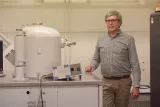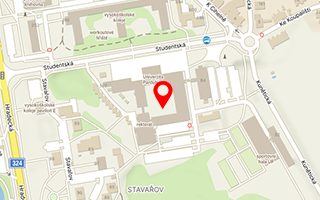Published: 07.06.2021
Scientists from the University of Pardubice obtained an American patent protection for a special alloy nanolayer with unique properties. It enables to save data thousand times faster and in ten times higher density than materials which have been used for storage media up until now. Researchers from the Faculty of Chemical Technology produced a nanolayer from material on the basis of chalcogenides, which have been subject to their long-term observation.
„We concern ourselves with materials which have potential to make data storage in a virtual world more effective. We have been testing memory cells in a range from several micrometres up to nanometres in size. We believe that thanks to better properties our material will find its use in the area of information storage and processing“, says the leader of an excellent team of the Faculty of Chemical-Technology, University of Pardubice, prof. Ing.Tomáš Wágner, DrSc.
The research team of prof. Wágner from the University of Pardubice focuses on the area of chalcogenides, where apart from selenium there are also other elements such as silver (Ag), germanium (Ge) or antimon (Sb). Scientists prepare amorphous alloys, make nano-sized pieces of film from them and observe their properties.
In future everyone will be able to get acquainted with their results of research in the area of materials for information storage devices. Our population generates hundreds of exabytes every year. Information or data, whether in the form of documents or pictures, must be stored and processed in a virtual world. Any smart device such as a mobile phone, computer or even a vacuum cleaner, has an in-built memory helping them control logical operations.
The fact that the memory on the new materials is non-volatile adds further value to them. „The current storage devices function on the principle of a transistor and a CMOS (Complementary Metal Oxide Semiconductor) technology, and they require constant power in order to retain data. When we record information on our material and cut off external power, the information stays stored,“ adds the chemist Tomáš Wágner.
The research makes contributions to the fields of electrical engineering and optics, but it can also extend beyond that, into the areas of medicine, environmental protection and safety. That is because the memory cells can be implemented into memory, neural networks, thus enabling a simulation of human brain functions. One day artificial neural networks could substitute activity of a human brain or a part of a neural system and after an injury replace the parts of a missing neural system in the human body.


